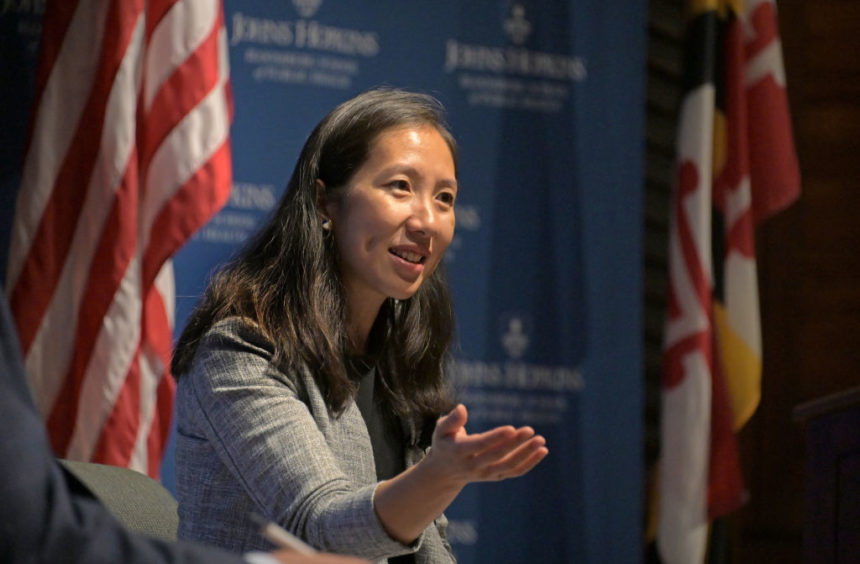In May, as the pace of vaccinations in the U.S. continued to rise, the Centers for Disease Control and Prevention updated its masking guidance to note that fully vaccinated people could resume normal activities without wearing a mask. While some experts expressed concern that the new guidelines were issued prematurely, the number of mask-wearers in public and indoor spaces plummeted within weeks.
But at the end of July, spurred in large part by a COVID-19 outbreak in Provincetown, Massachusetts, the CDC reversed those recommendations. Even those who had long since been vaccinated were advised to don masks indoors if they lived in areas of high transmission.
Understandably, the flip-flop in guidance has led to a flurry of criticism of the agency for sending mixed messages and confusing the public. And the aftermath of the Provincetown surge has unveiled major blind spots in the CDC’s pandemic response, ones that many experts believe are hindering the country’s ability to stem outbreaks.
Much of it boils down to the manner in which the CDC crafts its public messaging, according to Dr. Leana Wen, a visiting professor of health policy and management at George Washington University.
“Public health needs to be based on science, but having good science alone doesn’t mean you have an effective public health response,” Wen said. “The CDC keeps getting the science right but the policy interpretation and communication totally wrong.”
Wen argued that the CDC’s reversal in masking policy is but a single example of misleading and contradictory communication from the agency. In its wake, substantial confusion has been sown around who needs to mask up and whether vaccinated individuals can spread the virus as much as unvaccinated ones.
The CDC’s Provincetown report noted that, among some 600,000 people who gathered during public events on the July 4 weekend, more than 460 people were infected with COVID-19. Of those people, 74% were fully vaccinated. Not surprisingly, the study identified the Delta variant as the main culprit.
“The masking recommendation was updated to ensure the vaccinated public would not unknowingly transmit the virus to others, including their unvaccinated or immunocompromised loved ones,” said CDC chief Dr. Rochelle Walensky in the wake of the Provincetown cluster.
Wen, however, believes the CDC failed to clearly communicate that, while it’s possible for vaccinated people to develop breakthrough infections, the risk remains exceedingly low. She said the focus should have remained upon unvaccinated individuals, who continue to have a far higher risk of serious illness and of unknowingly transmitting the virus.
“It’s one study. There could be a totally different interpretation of that study,” Wen explained.
“Other people can look at the data and say the vaccines are protective. The reason why we’re changing guidance is because of the unvaccinated.”
Ultimately, this lack of clarity in the CDC’s communications has sown public mistrust.
“The messaging is confusing and public health ultimately depends on public trust,” Wen continued. “If you lose people’s trust by having messaging that appears to be contradictory, then that’s the worst thing that can happen. Because in times of crisis, you need people to trust you. People are scared and, if there is this erosion of trust, then we don’t have an effective communication strategy.”
But the CDC’s struggles go beyond its communication of information to the public. The Provincetown surge highlighted a greater problem with data-gathering. In May, the agency announced it would stop tracking breakthrough infections among vaccinated people, save for hospitalizations and deaths.
The CDC’s larger data problem — too little of it, collected in an inefficient manner — has resulted in the agency chasing surges and providing delayed responses.
“The CDC is still mired in the fog of pandemic, with too little data, collected too slowly, leaving it chasing epidemic waves and trying to make sense of information from other countries,” wrote Zeynep Tufekci, a sociologist and professor at the University of North Carolina at Chapel Hill, in a recent op-ed in The New York Times. “Epidemics spread exponentially, so delayed responses make problems much worse.”
In order for the CDC to repair its data-gathering processes, the agency needs to be more transparent about its resources, Wen said. For instance, it’s unclear whether the CDC considers data around breakthrough infections unimportant, or if it simply doesn’t have the resources to track them.
“If it’s a resource issue, that’s something I would hope the Biden administration would fix,” Wen noted. “There would probably be plenty of other people who would say they can gather the data, like state health departments and academic institutions. It’s unclear if there’s a rationale that the CDC doesn’t want to collect the data. This lack of transparency is a major issue.”
Of course, the mixed messages, inefficient data-gathering and lack of transparency might be attributed to the CDC’s standing as an academic organization focused on science and not policy-implementation. That’s why it might fall on the Biden administration to address some of the agency’s issues with communication.
“The CDC is a great peacetime institution. It’s the premier public-health entity to produce scientific data under normal circumstances” Wen said. “But we’re at war. We cannot wait, and a repositioning of the organization is needed at this time. We need to say, ‘You are good at the science, but there is something missing in your communication strategy.’”
From the September 01, 2021 Issue of MM+M - Medical Marketing and Media







